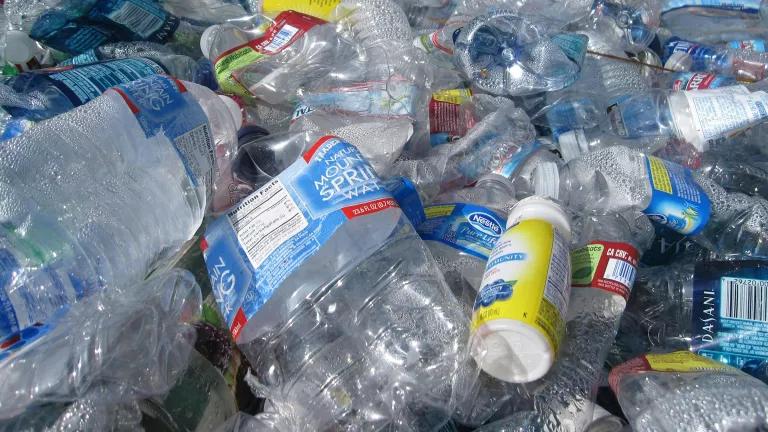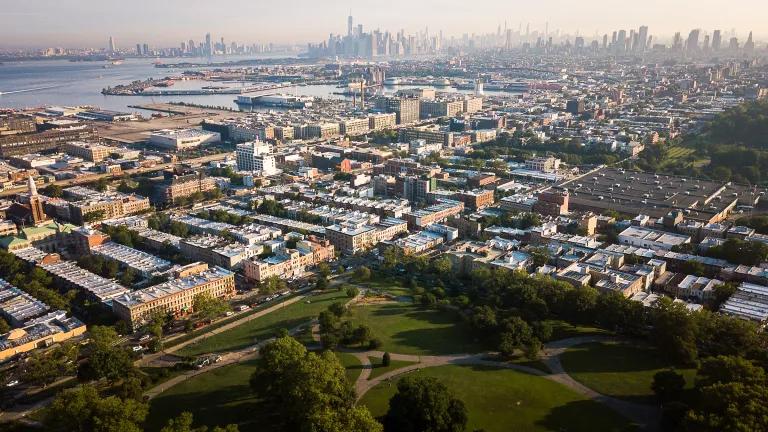The news was huge. After two years of intense community opposition, numerous concerns raised by environmental and other non-profit groups, and even a skeptical detailed report commissioned by the Massachusetts Attorney General, Kinder Morgan announced that it would suspend “further work and expenditures” on the Northeast Energy Direct (NED) Pipeline. (NRDC formally protested the NED project). In the world of interstate gas pipelines, where by the time a pipeline company files an application, construction is usually a foregone conclusion, the suspension was a rare victory.
Rare, that is, until the very next day when New York denied a necessary water quality certification to the Constitution Pipeline, thereby stopping that project in its tracks.
To those long engaged in the fight against the wasteful buildout of unnecessary oil and gas infrastructure, including pipelines, the story is often a sad one. That’s why these two major victories on Earth Week (which also saw the signing of the COP21 agreement in New York City), may be new signs of happier things to come.
Two Pipelines, One Path
One look at the plans for the NED and Constitution Pipelines, and you wouldn’t need to be an energy expert to see the potential for redundancy. Both had essentially the same purpose—to deliver fracked gas from the Marcellus to the greater Northeast Region—and both envisioned nearly identical pathways through well over a hundred miles in Pennsylvania and the heart of upstate New York. Add to that the serious questions raised about the need for either project in the first place.
Redundancy is not always a bad thing (think bed pillows), but not so with massive fossil fuel infrastructure projects. When not in an existing “right of way” (e.g., a highway), building a new interstate pipeline usually means permanently clearing a 50-foot-wide path for hundreds of miles, which can cut eerily through pristine natural areas like forests or settled areas like farms and residential neighborhoods. Property owners who don’t want a pipeline in their backyard often face tough luck, as most of the time developers can use eminent domain to simply take property rights that they aren’t able to negotiate for.
Pipelines also come with risks and costs. Leaks and accidents on oil and petroleum pipelines have shot up in recent years with increased production generating millions of dollars of property damage. Gas pipelines are no strangers to leaks and accidents too (for example, the spectacular explosion on the Viking Pipeline in 2014). And even well-functioning pipelines are expensive to build, with those costs usually recouped over decades, ultimately, from energy consumers (i.e. you and me).
Long story short, building unneeded pipelines makes no sense, especially at a time when we need to be doubling down on renewable energy and energy efficiency, and extra-cautious not to lock ourselves into the prolonged use of dirty fuels. The overlapping paths of NED and Constitution in a state with plenty of existing gas infrastructure brought all of these issues to the fore, and some serious concerns because, unfortunately, irresponsible gas pipeline projects are not always so easy to stop.
Gas Pipelines—Not Like Keystone
Unlike oil and petroleum pipelines (like Keystone)—which generally require various approvals from the states and federal agencies—interstate gas pipelines fall almost completely within the jurisdiction of the Federal Energy Regulatory Commission (FERC). Although FERC performs a number of different roles (including regulation of electricity transmission and energy markets), when it comes to gas pipelines, it’s historically given rubber stamp approval for nearly every pipeline proposal that has crossed its desk.
That’s because, while it’s charged with looking at whether new pipelines serve the “public convenience and necessity,” FERC’s test for determining public need generally greenlights any pipeline where the developer has secured long-term contracts with new customers. This practice also means that FERC tends to look at each new pipeline proposal in isolation—both environmentally and economically—preventing the agency from truly understanding how other similar proposals cumulatively affect important natural resources (let alone the climate) and the costs paid by energy consumers. Under these circumstances, the message to industry has been clear: where you get the contracts, you get the pipeline.
Profitability for a pipeline company, however, doesn’t prevent local harms. Once FERC approves a pipeline, that gives the builder authorization to start taking and clearing land through eminent domain. In Pennsylvania, this is exactly how one family lost most of its maple farm to the clearing of the Constitution right of way before the New York decision. To make matters worse, lawsuits against FERC pipeline decisions are extremely difficult to win, and even where challengers do partially prevail, the pipeline may already be built by the time they do.
A New Hope?
Difficult odds, however, don’t mean impossible odds. Although states have limited say over whether and where an interstate gas pipeline will be built, they still must certify under the Clean Water Act that the line does not endanger state waters. That’s why New York’s rejection of that certification for the Constitution Pipeline is another bold and potentially precedent setting move by the Cuomo administration, demonstrating how states can elevate protection of precious resources above the profits of big industry.
Additionally, it’s now clear that the power of the popular movement against imprudent pipelines and oil and gas infrastructure cannot be underestimated, and no doubt played a role in Kinder Morgan’s decision to suspend work on the NED line.
All and all, while the final chapter has not yet been written on either line (NED is only “suspended,” and Constitution’s backers have vowed to challenge the Governor’s decision), we may look back on Earth Day 2016 as a watershed moment in our region’s move away from dirty energy on the day that global leaders assembled here to pledge the same.




